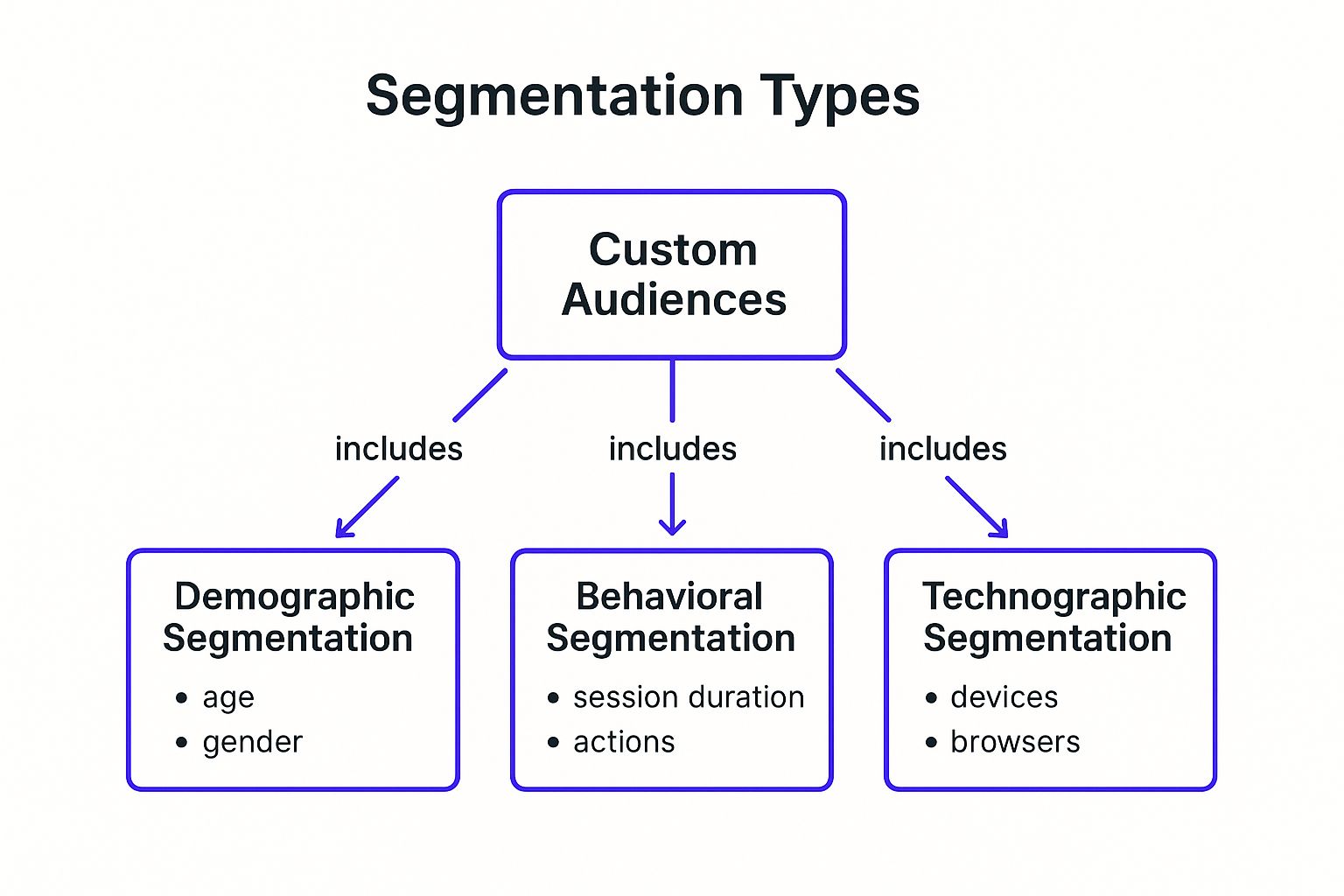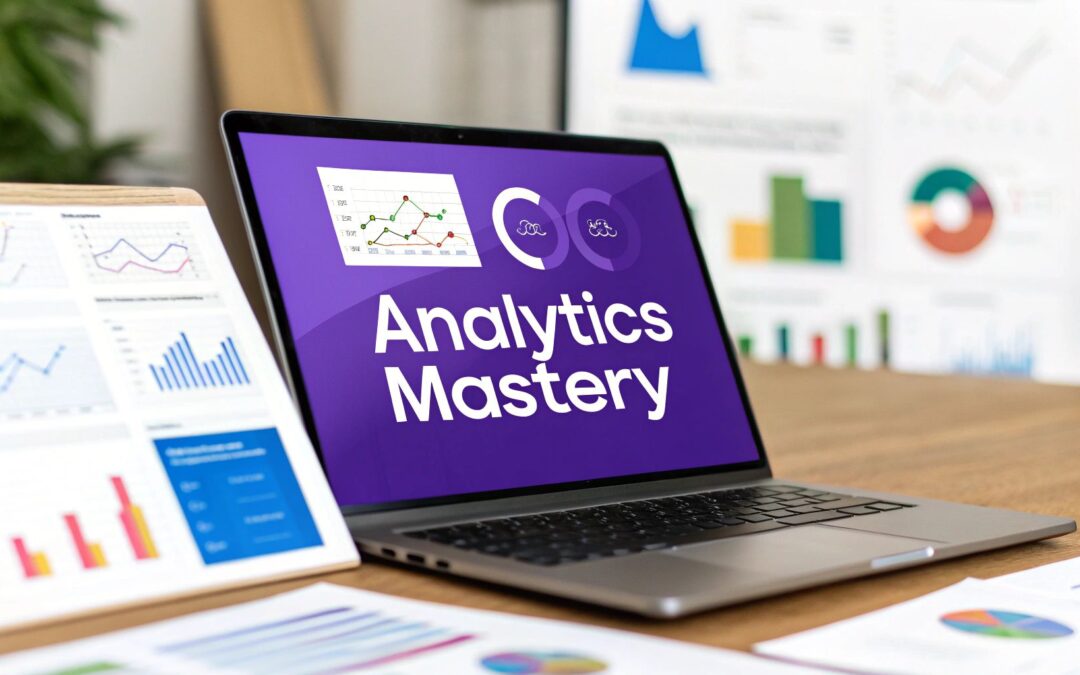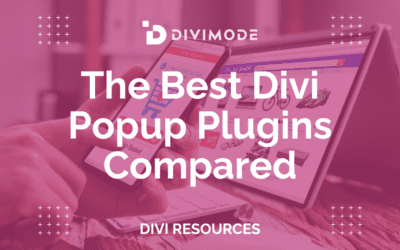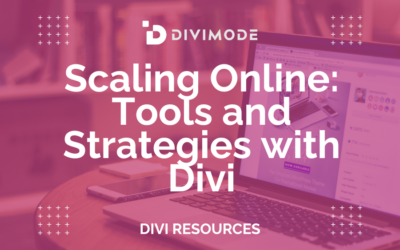In a digital environment where every click, scroll, and conversion tells a story, understanding your website's performance is no longer optional, it is essential. Yet, many Divi users find themselves drowning in data, unsure which metrics truly matter or how to translate numbers into actionable strategies. It is easy to install a tool like Google Analytics, but transforming raw data into business growth requires a deliberate, structured approach. This guide cuts through the noise.
We will explore the core website analytics best practices that separate high-performing websites from the rest. You'll move beyond vanity metrics and start focusing on the insights that drive meaningful results. This involves setting clear, business-aligned goals, ensuring your data is accurate, and integrating insights deep into your decision-making process. Mastering these fundamentals is the first step, but for businesses looking to accelerate their progress, investing in comprehensive website optimization services can translate these analytics insights into tangible, sustainable growth.
This listicle provides a clear roadmap to achieving data maturity. We will cover critical practices such as:
- Establishing clear goals and Key Performance Indicators (KPIs).
- Implementing precise event tracking and custom segmentation.
- Understanding attribution modeling to accurately measure marketing impact.
- Ensuring data privacy and compliance in a changing regulatory landscape.
Whether you're aiming to boost sales, increase user engagement, or optimize your marketing spend, these principles will provide the framework you need to make every data point count. Let’s dive into the practices that will unlock your data’s true potential.
1. Set Up Clear Goals and KPIs
Before you even think about code snippets or dashboards, the first and most critical of all website analytics best practices is to define what success actually looks like. Diving into analytics without clear objectives is like sailing without a compass; you'll drift aimlessly through seas of data, mistaking noise for insight. Setting specific, measurable, achievable, relevant, and time-bound (SMART) goals provides the essential framework for your entire analytics strategy. It transforms raw data into a powerful tool for business growth.

This foundational step ensures every piece of data you collect and analyze has a purpose. Instead of tracking dozens of vanity metrics, you can focus on the key performance indicators (KPIs) that directly impact your business outcomes.
Why This Matters for Your Divi Site
For Divi users, this process is especially crucial. Whether you're building a lead generation landing page with the Divi Builder, an e-commerce store with WooCommerce, or a content-rich blog, your goals dictate how you interpret user behavior. A high bounce rate might be alarming for an e-commerce product page but perfectly acceptable for a blog post that quickly answers a user's specific question. Without predefined goals, you can’t make that distinction.
Practical Examples of Goals and KPIs
Your goals will vary significantly based on your website's purpose. Here’s how different types of sites might define success:
- E-commerce Site: The primary goal is often to increase sales. A specific KPI could be to improve the add-to-cart to purchase conversion rate by 10% in the next quarter.
- SaaS Company: Success is tied to user acquisition and retention. A key goal might be to increase free trial sign-ups by 20% and achieve a trial-to-paid conversion rate of 15%.
- Content Blog or News Site: Engagement is paramount. Goals could include increasing the average time on page by 30 seconds or boosting the percentage of return visitors to 40% within six months.
Actionable Implementation Tips
- Start Small: Begin with 3 to 5 primary KPIs. This prevents overwhelm and keeps your team focused on what truly drives results.
- Document Everything: Create a shared document that clearly outlines each goal, its corresponding KPIs, and the rationale behind it. This ensures alignment across your marketing, sales, and development teams.
- Configure Your Tools: Once goals are set, configure them within your analytics platform. In Google Analytics 4 (GA4), this means setting up key events as "conversions" to track completions automatically.
- Review and Adapt: Your business goals aren't static. Schedule quarterly reviews to assess progress, analyze performance, and adjust your objectives based on new insights and changing market conditions. For a deeper dive into selecting the right metrics, you can learn more about tracking key performance indicators for your business.
2. Implement Proper Event Tracking
While pageviews tell you where users are going, they don't reveal what they are doing once they get there. This is where event tracking becomes an indispensable part of your website analytics best practices. It allows you to monitor specific, meaningful user interactions that go beyond simple page loads, such as button clicks, video plays, form submissions, and file downloads. By tracking these granular actions, you move from a surface-level view to a deep understanding of user engagement and intent.

This level of detail is crucial for accurately diagnosing friction points in your user journey and identifying which features are most valuable to your audience. Instead of guessing why users aren't converting, you can pinpoint the exact step where they drop off. This data-driven approach, popularized by platforms like Mixpanel and Amplitude, transforms your website from a static brochure into an interactive experience you can continuously improve.
Why This Matters for Your Divi Site
For Divi builders, event tracking is a game-changer. The Divi Builder allows for the creation of rich, interactive modules like accordions, toggles, sliders, and custom-designed call-to-action buttons. Standard pageview analytics won't tell you if users are actually interacting with these elements. By implementing event tracking, you can measure how many users click your "Request a Quote" button, watch your embedded portfolio video, or expand a specific service description in an accordion, providing direct feedback on your design's effectiveness.
Practical Examples of Event Tracking
Effective event tracking connects user actions directly to your business goals. Here are a few examples of how different platforms use it:
- Netflix: Tracks video plays, pauses, and completion rates to understand viewing habits and refine its powerful content recommendation algorithm.
- HubSpot: Monitors CTA click-through rates and individual field completions within forms to optimize its lead generation funnels and reduce user friction.
- Spotify: Analyzes events like playlist creation, song skips, and sharing activity to enhance user experience and personalize music discovery.
Actionable Implementation Tips
- Create an Event Tracking Plan: Before implementing a single tag, document what you want to track and why. Define a consistent naming convention (e.g., Category_Action_Label) to keep your data organized and easy to analyze.
- Leverage Google Tag Manager (GTM): Use a tool like GTM to deploy and manage your event tags without needing to edit your site's code directly. This empowers marketers to implement tracking quickly and reduces reliance on developers.
- Focus on Goal-Relevant Events: Don't track every single click. Prioritize events that directly correlate with your KPIs, such as newsletter sign-ups, lead magnet downloads, or clicks on "Add to Cart" buttons.
- Test and Validate: Use GTM's "Preview" mode or the real-time reports in Google Analytics to ensure your events are firing correctly before you publish them. This prevents data corruption and ensures your reports are reliable.
3. Create Custom Segments and Audiences
Viewing your website traffic as one monolithic group is a surefire way to miss critical insights. A core tenet of effective website analytics best practices is segmentation: the art of dividing your audience into smaller, meaningful groups based on shared characteristics. This allows you to move beyond broad averages and understand the distinct behaviors, needs, and conversion paths of different types of visitors. By creating custom segments, you can uncover why certain groups convert while others don't, enabling highly targeted optimizations.
This infographic illustrates how different types of user data can be combined to create powerful custom audiences for analysis and targeting.
 The visualization shows that by layering demographic, behavioral, and technographic data, you can build a multi-dimensional view of your visitors, moving from generic traffic to specific, actionable audiences.
The visualization shows that by layering demographic, behavioral, and technographic data, you can build a multi-dimensional view of your visitors, moving from generic traffic to specific, actionable audiences.
Why This Matters for Your Divi Site
For Divi users, segmentation is particularly powerful. Imagine you've built a custom landing page for a specific marketing campaign using the Divi Builder. By segmenting traffic from that campaign, you can isolate its performance and analyze how those users interact with your site differently than organic visitors. You might discover that mobile users from a social media campaign have a high bounce rate, signaling a need to optimize the mobile version of your Divi layout specifically for that audience.
Practical Examples of Segments and Audiences
Segmentation moves you from asking "How is my website performing?" to "How is my website performing for this specific group?". Here are some examples:
- E-commerce Site: A powerful segment could be "High-Value Shoppers" (users with more than three purchases or a high average order value) versus "Cart Abandoners" (users who added to cart but did not purchase). This allows you to tailor remarketing and on-site offers.
- SaaS Company: A crucial distinction is between "New Trial Users" and "Engaged Trial Users" (those who have used a key feature). Dropbox, for instance, segments users by engagement to create targeted campaigns aimed at encouraging deeper product adoption and preventing churn.
- Content Blog or News Site: You could create segments for "First-Time Visitors from Organic Search" versus "Returning Visitors from Email Newsletter." This helps you understand how different acquisition channels influence content consumption and loyalty.
Actionable Implementation Tips
- Start Broad, Then Refine: Begin with simple segments like "Mobile vs. Desktop" or "New vs. Returning." As you gather insights, create more granular segments, such as "Mobile users from California who viewed a specific product page."
- Use Cohort Analysis: In tools like Google Analytics 4, use cohort analysis to track a group of users who share a common characteristic (e.g., all users who signed up in the first week of May) over time. This reveals long-term behavior and retention patterns.
- Activate Audiences: Don't just analyze segments; activate them. Push your custom audiences to advertising platforms like Google Ads to run highly targeted remarketing campaigns based on their on-site behavior.
- Review and Evolve: User behavior changes. Regularly review your segments to ensure they are still relevant and useful. A segment that was valuable last quarter may need to be adjusted or retired.
4. Implement Attribution Modeling
Understanding the full customer journey is one of the most complex yet valuable parts of website analytics best practices. Attribution modeling moves beyond the simplistic last-click approach, where the final touchpoint before a conversion gets 100% of the credit. Instead, it distributes credit across various marketing channels and interactions, giving you a far more accurate view of what truly drives results. This holistic perspective is essential for making informed decisions about budget allocation and marketing strategy.
This advanced technique helps you see how different channels, like organic search, paid ads, social media, and email marketing, work together to guide a user toward a conversion. Without it, you might undervalue top-of-funnel activities that introduce your brand to new audiences, even if they don't lead to an immediate sale.
Why This Matters for Your Divi Site
For Divi site owners, attribution modeling reveals the hidden value of your diverse content and marketing efforts. Perhaps a blog post attracts a user via SEO, they later see a retargeting ad on Facebook, and finally convert after clicking a link in your email newsletter. Last-click attribution would only credit the email, ignoring the crucial roles played by your blog and social media ad. Understanding this full path allows you to justify investment in content creation or brand awareness campaigns that don't have a direct, final-click ROI.
Practical Examples of Attribution Modeling
Different business models benefit from seeing the complete customer journey. Here’s how attribution can provide clarity:
- E-commerce Site: A brand like Warby Parker can use multi-touch attribution to connect online ad views to in-store try-on appointments and eventual online purchases, revealing a complex online-to-offline journey.
- Content-Driven Brand: A company like Casper can analyze how a user reading a blog post about sleep science (top-of-funnel) weeks before purchasing a mattress is a critical part of the sales cycle, proving the value of content marketing.
- B2B SaaS Company: Salesforce can track how webinars, whitepaper downloads, and email nurturing sequences collectively contribute to a high-value demo request, showing that no single touchpoint is solely responsible for the lead.
Actionable Implementation Tips
- Start with GA4's Models: Google Analytics 4 offers several built-in attribution models (like linear, time decay, and position-based) in its advertising workspace. Start by comparing these to your default data-driven model to see how your channel credit shifts.
- Use Data-Driven Attribution (DDA): If your site has sufficient conversion volume, GA4's default Data-Driven Attribution model is a powerful starting point. It uses machine learning to assign credit based on your specific data, offering a more customized view than rule-based models.
- Combine with Customer Journey Reports: Use GA4's "Conversion paths" report to visualize the common sequences of channels users take. This qualitative insight, paired with quantitative attribution data, tells a complete story.
- Inform Your Budget: Use insights from a more holistic attribution model to reallocate your marketing budget. You may find that channels you previously undervalued are playing a significant role in assisting conversions and deserve more investment.
5. Ensure Data Privacy and Compliance
In today's digital landscape, respecting user privacy isn't just good ethics; it's a legal and business necessity. One of the most important website analytics best practices is to ensure your data collection methods are fully compliant with regulations like GDPR and CCPA. Navigating these rules, alongside browser-level changes like third-party cookie deprecation, is essential for building user trust and maintaining the integrity of your analytics. This practice is about balancing the need for actionable data with a user's fundamental right to privacy.
Adopting a privacy-first approach demonstrates to your audience that you value their data, which can enhance brand reputation and user loyalty. It forces you to be more intentional about the data you collect, focusing on what is truly necessary rather than gathering everything possible.
Why This Matters for Your Divi Site
For Divi site owners, compliance is not optional, especially if you have visitors from regions like the European Union or California. Whether you're using contact forms built with the Divi Builder, running a WooCommerce store, or simply tracking visitor behavior with Google Analytics, you are processing user data. Failing to obtain proper consent or provide transparency can lead to significant fines and a loss of visitor trust, directly impacting your site's credibility and performance.
Practical Examples of Privacy-First Analytics
Many organizations have successfully integrated privacy into their analytics strategy without sacrificing valuable insights.
- European News Sites: Following GDPR, major European publishers implemented clear cookie consent banners, giving users granular control over which trackers are active while still gathering aggregate data on content performance.
- Privacy-Focused Companies: Brands like DuckDuckGo analyze user interaction on their own site using privacy-preserving methods that don't rely on personal identifiers, proving that optimization is possible without invasive tracking.
- Apple's Ecosystem: Apple's App Tracking Transparency (ATT) framework is a prime example of a platform-level shift, forcing developers to explicitly ask for permission to track users across apps and websites.
Actionable Implementation Tips
- Implement a Consent Management Platform (CMP): Use a robust CMP to manage user consent for cookies and trackers. These tools provide the necessary banners and controls to comply with regulations. For an in-depth review, you can explore the 4 best WordPress GDPR compliance plugins.
- Practice Data Minimization: Only collect the data you absolutely need to achieve your defined goals. Avoid collecting personally identifiable information (PII) unless it's essential and you have explicit consent.
- Ensure Transparency and Control: Your privacy policy should be clear, concise, and easy to find. A critical part of this is empowering users with control over their personal information. Understanding how users can control their data, including the ability to request its deletion, is fundamental.
- Consider Privacy-First Analytics Tools: Explore alternatives to traditional analytics platforms. Tools like Plausible, Fathom, or Matomo are designed from the ground up to provide useful insights without collecting personal data or using cookies.
6. Set Up Real-Time Monitoring and Alerts
While historical data analysis is crucial for strategic planning, waiting for daily or weekly reports can mean missing critical, time-sensitive events. This is where real-time monitoring comes in. This practice involves tracking your most important metrics as they happen and setting up automated alerts for significant changes. It’s the digital equivalent of an early warning system, empowering you to react instantly to problems and capitalize on sudden opportunities.

By creating a system of alerts, you move from a reactive to a proactive stance. Instead of discovering a catastrophic drop in conversions a day late, you can be notified within minutes, allowing you to investigate and resolve the issue before it causes significant damage. This is a non-negotiable component of modern website analytics best practices.
Why This Matters for Your Divi Site
For Divi site owners, real-time alerts are a safety net for a dynamic environment. Imagine you push an update to a theme file or a plugin, and it inadvertently breaks a critical Divi module on your checkout page. An alert for a sudden drop in transaction events would notify you immediately, not hours later after substantial revenue loss. Similarly, if a new blog post suddenly goes viral, a traffic surge alert can prompt you to ensure your server can handle the load and to further promote the successful content.
Practical Examples of Monitoring and Alerts
Alerts should be tied directly to your most critical business operations and KPIs. Here’s how different sites can leverage this:
- E-commerce Site: Set an alert for when the transaction count drops by more than 50% in an hour compared to the previous hour. This can catch payment gateway failures or broken "Add to Cart" buttons during a high-traffic sale.
- SaaS Company: Create an alert for a sudden spike in 404 errors or a high server response time. This helps correlate sign-up issues with backend performance problems, ensuring a smooth user acquisition funnel.
- Media Site: A media or news outlet could set an alert for when real-time users from a specific referral source (like Twitter or Reddit) exceed 500. This signals viral content that warrants immediate attention and resource allocation.
Actionable Implementation Tips
- Start with Critical KPIs: Don't create alerts for everything. Begin by monitoring your top 3-5 "health check" metrics: conversions, 404 errors, and server uptime.
- Use Smart Alerts: In Google Analytics 4, leverage the "Insights & recommendations" feature to create custom alerts based on anomalies. You can set conditions like "Hourly transactions decrease by more than 80% compared to the same hour yesterday."
- Define Escalation Paths: Determine who gets notified for which alert. A technical alert about server errors might go to your developer, while a conversion drop alert might go to the marketing manager.
- Refine Your Thresholds: Fine-tune your alert sensitivity to avoid "alert fatigue" from too many false positives. For example, set different thresholds for peak business hours versus overnight periods to reflect normal traffic fluctuations. For advanced performance monitoring, tools like Datadog can provide even more granular control.
7. Conduct Regular Data Audits and Quality Checks
Your analytics data is the foundation upon which critical business decisions are built. If that foundation is cracked, incomplete, or flawed, every insight you derive will be questionable. This is why conducting regular data audits is one of the most vital website analytics best practices. It involves systematically reviewing your tracking setup, data streams, and reporting to ensure the information you collect is accurate, reliable, and free from corruption.
Think of it as routine maintenance for your data engine. Just as you wouldn’t drive a car for years without checking the oil, you shouldn't run your business on analytics data without verifying its integrity. This practice protects you from making costly mistakes based on bad information, such as misinterpreting user behavior due to bot traffic or incorrectly attributing conversions.
Why This Matters for Your Divi Site
For Divi sites, where you might use a combination of the Divi Builder, third-party plugins, and custom code, the potential for tracking conflicts or errors is significant. A theme update, a new plugin installation, or a simple change to a contact form can inadvertently break your event tracking. A regular audit ensures that critical actions, like a Divi Contact Form submission or a click on a Divi CTA module, are still being recorded accurately in your analytics platform.
Practical Examples of Data Audits
Major digital platforms live and die by their data quality, making them excellent models for this practice:
- E-commerce Platform: An e-commerce giant would regularly audit its checkout funnel tracking. They would check for discrepancies between their analytics platform and their payment gateway records to ensure conversion rates and revenue data are precise.
- SaaS Company: A software provider might perform a monthly review to ensure that in-app user events, like a "feature adopted" or "project created" metric, are firing correctly and that no duplicate or ghost events are skewing engagement data.
- Media Publisher: A news organization must filter out bot traffic to accurately report on article readership and ad impressions. Their audits would focus on identifying and excluding non-human traffic to maintain data integrity for advertisers and editors.
Actionable Implementation Tips
- Create an Audit Checklist: Develop a checklist to review monthly or quarterly. Include items like verifying tracking code implementation, checking for referral spam, ensuring key conversion events are firing, and confirming that data filters are working as expected. To ensure your analytics data is reliable and accurate for effective analysis, consider implementing essential data cleansing methods as part of this process.
- Cross-Reference Your Data: Don't trust a single source. Compare your analytics data against other systems. For example, match the number of leads in Google Analytics 4 with the number of entries in your CRM or email marketing platform.
- Use Annotations: Whenever you make a significant change to your site, like a redesign or launching a new campaign, add an annotation in your analytics tool. This provides context for any sudden spikes or dips in data, making future audits much easier.
- Integrate with Your Maintenance Schedule: Treat data auditing as a core part of your website's upkeep. For more on this, check out our guide on essential Divi maintenance tasks to perform regularly.
8. Integrate Analytics with Business Intelligence Systems
While website analytics provide a powerful view of online behavior, they only tell part of the story. To achieve a truly holistic understanding of your business, you must connect this web data with your broader business intelligence (BI) systems. This integration breaks down data silos, allowing you to correlate online user actions with offline outcomes like sales figures, customer support tickets, and marketing campaign costs. This practice transforms isolated metrics into a comprehensive, multi-dimensional view of your organization's performance.
By weaving web analytics into your BI fabric, you can answer complex questions that neither dataset could address alone. It’s the key to moving from simply reporting on what happened on your site to understanding its direct impact on your entire business ecosystem, making it a crucial website analytics best practice for data-driven organizations.
Why This Matters for Your Divi Site
For businesses using Divi, integrating analytics is about connecting the dots between website performance and real-world results. Imagine a lead generation form built with the Divi Builder. On its own, analytics can tell you the form’s submission rate. But when integrated with your CRM (like Salesforce), you can track which submissions converted into high-value customers, revealing the true ROI of your Divi-powered landing page and enabling sophisticated lead scoring.
Practical Examples of Integration
This approach allows for powerful, cross-functional insights that drive strategic decisions:
- E-commerce (Omnichannel): A retailer like Walmart can integrate its website analytics with in-store point-of-sale data. This reveals how online browsing behavior influences offline purchases, helping to optimize omnichannel marketing and inventory management.
- SaaS Company: Integrating website behavior from GA4 with CRM data in Salesforce allows for advanced lead scoring. A user who visits the pricing page three times and watches a demo video can be automatically flagged as a hot lead for the sales team.
- Service-Based Business: A local service business can connect website appointment bookings with its financial software. This helps calculate the exact revenue generated per marketing channel, moving beyond simple conversion tracking to measure cost per acquisition and customer lifetime value.
Actionable Implementation Tips
- Start with Key Questions: Don't integrate everything at once. Begin by identifying 1-2 critical business questions you can't answer with web data alone (e.g., "Which marketing channel brings in the most profitable customers?").
- Use ETL/Integration Tools: You don't need a full data engineering team to start. Tools like Zapier or Make.com can create simple connections between your analytics and other apps. For more robust needs, platforms like Fivetran or Stitch can pipe data directly into a data warehouse for BI tools like Microsoft Power BI or Tableau to analyze.
- Maintain Data Governance: Ensure data consistency and security across all integrated systems. Establish clear protocols for data handling, naming conventions, and access rights to maintain data integrity and comply with privacy regulations.
- Visualize the Combined Data: The goal is a unified dashboard. Use a BI tool to create visualizations that blend website KPIs (like sessions and conversion rates) with business metrics (like revenue and customer churn) on a single screen for clear, actionable insights.
Best Practices Comparison for Website Analytics
| Item | Implementation Complexity 🔄 | Resource Requirements ⚡ | Expected Outcomes 📊 | Ideal Use Cases 💡 | Key Advantages ⭐ |
|---|---|---|---|---|---|
| Set Up Clear Goals and KPIs | Medium – requires upfront planning and stakeholder alignment | Moderate – mainly planning and management | Focused, measurable business objectives; clear ROI | Businesses defining success and prioritizing metrics | Prevents analysis paralysis; improves team alignment |
| Implement Proper Event Tracking | High – technical setup and ongoing maintenance | High – technical resources and monitoring | Granular user behavior insights; conversion funnel analysis | Websites needing in-depth interaction tracking | Enables advanced segmentation; reveals user engagement |
| Create Custom Segments and Audiences | Medium-High – complex with volume and management | Moderate-High – data and tooling for segmentation | Targeted user groups analysis; personalized experiences | Businesses seeking personalized marketing and A/B testing | Reveals hidden patterns; improves conversion rates |
| Implement Attribution Modeling | High – sophisticated setup and interpretation | High – advanced tools and ongoing maintenance | Accurate multi-channel ROI; deeper customer journey insights | Multi-channel marketing performance measurement | Better budget allocation; reveals channel synergies |
| Ensure Data Privacy and Compliance | Medium – ongoing legal and technical upkeep | Moderate – legal expertise and technical implementation | Compliant, privacy-focused data collection | Businesses subject to GDPR, CCPA, and privacy laws | Builds trust; avoids legal penalties; future-proofs strategy |
| Set Up Real-Time Monitoring and Alerts | Medium – initial setup and continual tuning | Moderate – monitoring tools and alert management | Immediate issue detection; proactive optimization | Sites needing quick response to performance changes | Enables rapid response; reduces downtime and losses |
| Conduct Regular Data Audits and Quality Checks | Medium – regular, dedicated effort required | Moderate – time and expertise for audits | Reliable, accurate data; maintained data integrity | Businesses relying on data-driven decisions | Identifies tracking issues early; improves confidence |
| Integrate Analytics with Business Intelligence Systems | High – complex data integration and maintenance | High – technical, financial, and governance resources | Holistic business insights; cross-departmental correlation | Enterprises needing unified business performance view | Enables sophisticated analysis; supports strategic decisions |
From Data to Decisions: Making Analytics Work for You
We've explored a comprehensive framework of eight essential website analytics best practices, moving from foundational principles to advanced strategic integrations. The journey from raw data to informed, impactful decisions is not a single leap but a series of deliberate, well-executed steps. Mastering this process is what separates thriving digital businesses from those that merely exist online. It's about transforming your Divi website from a static digital brochure into a dynamic, responsive asset that actively contributes to your bottom line.
The power of this framework lies in its interconnected nature. Setting clear goals and KPIs (Key Performance Indicators) gives your data a purpose. Implementing proper event tracking for every meaningful interaction, from a Divi form submission to a WooCommerce 'Add to Cart' click, provides the granular detail you need. Creating custom segments and audiences then allows you to analyze that detail with surgical precision, understanding not just what happened but who made it happen.
Turning Insights into Strategic Action
Merely collecting data is a passive activity. The true value emerges when you actively engage with it. This is where advanced practices like attribution modeling become critical. Understanding which channels and touchpoints genuinely contribute to conversions allows you to allocate your marketing budget with confidence, eliminating wasteful spending and doubling down on what works.
Simultaneously, a commitment to data integrity is non-negotiable. Regular data audits and quality checks ensure your decisions are based on a reliable foundation, while a steadfast approach to data privacy and compliance builds trust with your audience and protects your business. Integrating these rich, clean datasets with Business Intelligence (BI) systems is the final step, elevating your analytics from a siloed marketing function to a core component of your overall business strategy.
Your Actionable Roadmap to Analytics Mastery
The path forward can seem daunting, but progress begins with a single step. Don't try to overhaul your entire analytics ecosystem overnight. Instead, use these best practices as a checklist to audit your current setup.
- Start with an Audit: Review your existing Google Analytics 4 setup. Are your goals clearly defined as conversions? Are you tracking the most critical user interactions on your Divi site?
- Pick One Area to Improve: Perhaps you realize you have no custom segments. Start there. Create a few basic segments, such as "Engaged Mobile Users" or "Visitors from Organic Search Who Viewed a Product."
- Validate Your Data: If you haven't performed a data quality check in the last six months, make that your priority. Ensure your tracking codes are firing correctly and that you aren't collecting spam or bot traffic that skews your reports.
- Connect Insights to Action: The next time you analyze a user behavior report, ask yourself, "How can I use this information to improve the user experience right now?" This mindset shift is crucial.
Remember, the goal of implementing these website analytics best practices is not to generate prettier reports. It's to gain a profound understanding of your audience so you can serve them better. It's about using empirical evidence to guide your design choices, content strategy, and marketing campaigns. By embracing this data-driven culture, you empower yourself to build a more intelligent, user-centric, and ultimately more successful Divi website. The tools are at your disposal, the data is waiting to be interpreted, and the opportunity for growth is immense.
Ready to bridge the gap between analytics insights and real-time action on your Divi site? Divimode offers powerful tools like Divimode that allow you to display personalized content and CTAs based on user behavior, traffic sources, and more. Stop just analyzing your data and start acting on it to create a truly dynamic and conversion-focused user experience.






